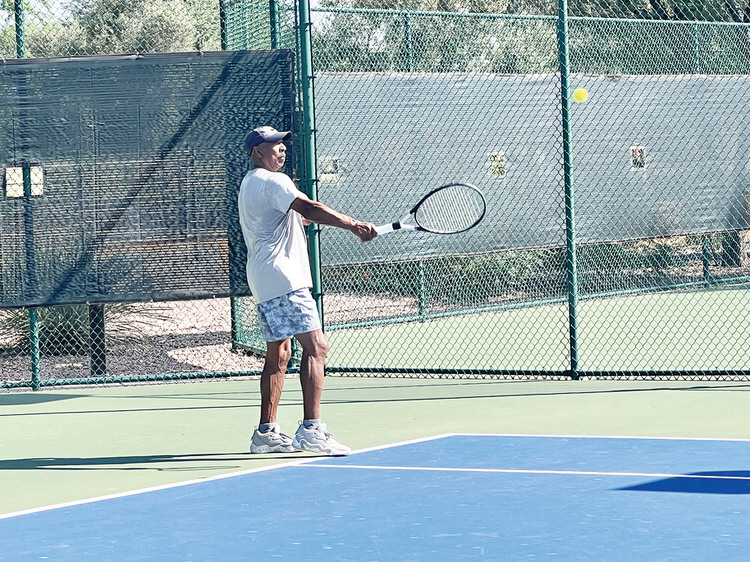
Troney Hutchins keeping his brain sharp!
Donna Gillen
Recently a book was published titled Put Your Brain First. I was sent a copy of the first published draft a few months ago by my college roommate, Alison Kal. The book is an easy read but has many very interesting studies about brain health and our physical activities. This article will briefly sum up the book and the studies along with references.
Why would this article be written for the PebbleCreek Post by an avid tennis player? The book explores multitasking physical activity and its relationship to brain fitness. Tennis happens to be one of the best activities for older adults (seniors) to keep their brain functioning in tip top condition.
Tennis requires so many physical and mental connections to play smartly, safely, and successfully. A player needs to be agile, quick minded, calculating and have extraordinary muscle memory and endurance, all while concentrating on a fast moving ball in the process.
Over the summer, there have been articles in the Post regarding the active tennis players who are in their 80s and 90s. They may not be quite as mobile as they were 10 years ago, but their accuracy on the courts requires short runs and more mental acuity to calculate exactly how many steps, how long to wait, and then determine how to respond to that little yellow ball approaching them. It is with awe to watch their matches.
Put Your Brain First points out that while many older adults seem to mentally stimulate their brains with Sudoku, crosswords, card games, etc., this does not get the brain fully engaged as when a physical component is added.
You may wonder if this article is biased towards tennis. No, it was listed in this book as second best. The best activity is ballroom dancing. When combining music, tempo, beat, steps, and a partner, you have a recipe for disaster on the floor, unless you are using your brain power and have the stamina too.
Recently, USA Today published an article supporting the importance of physical activity through a study by Wake Forest College. Their study took sedentary people and randomly divided them between groups—one that would exercise and one remaining sedentary. All participants had memory issues. The study concluded physical activity can slow memory decline.
To sum it all up, whether you’re on the dance floor, courts, the greens, or running the bases, keep your brain active! Let’s work to stay active both physically and cognitively!
